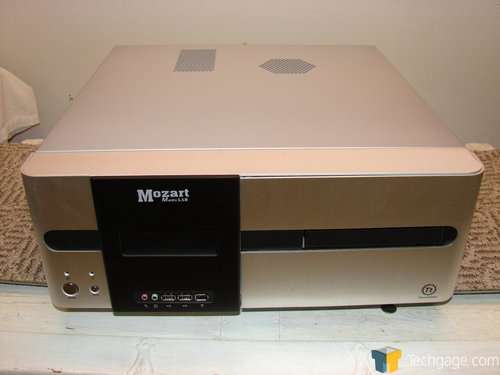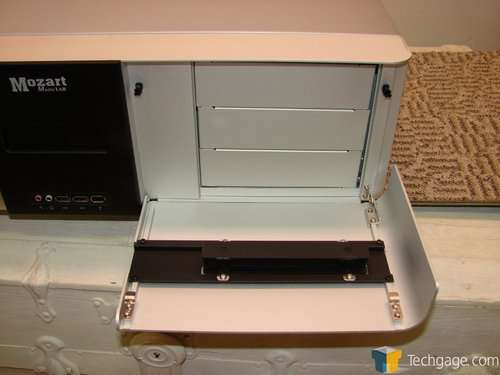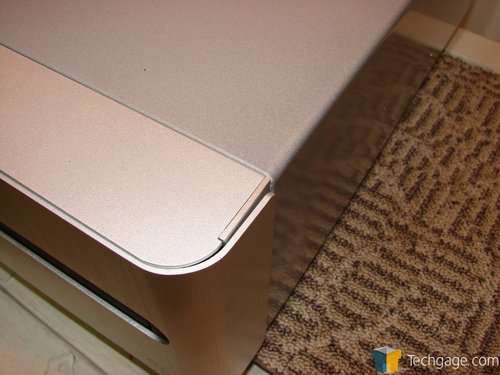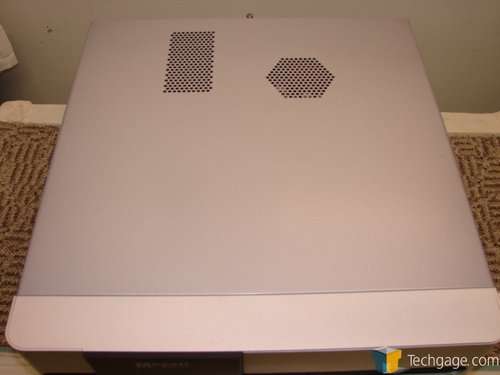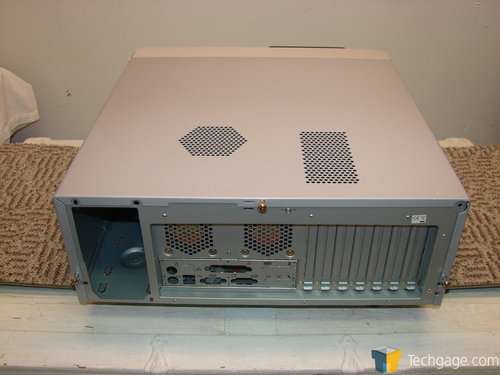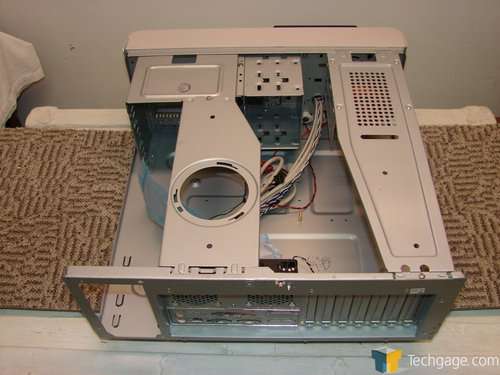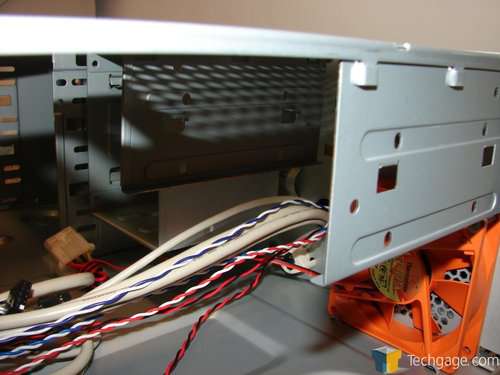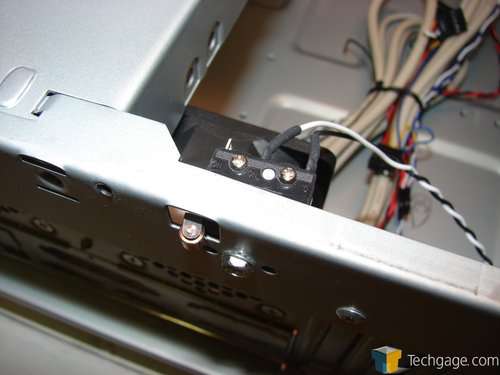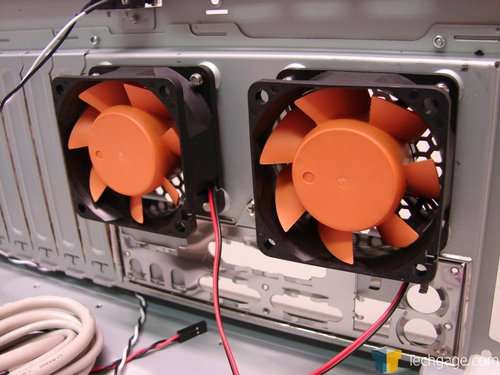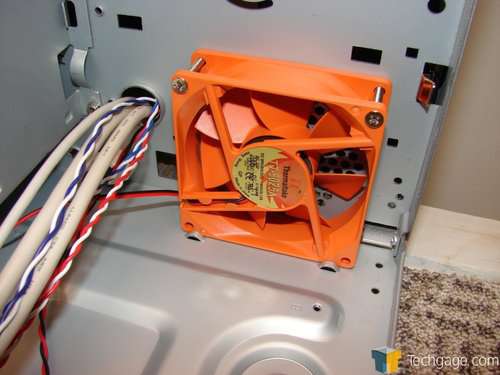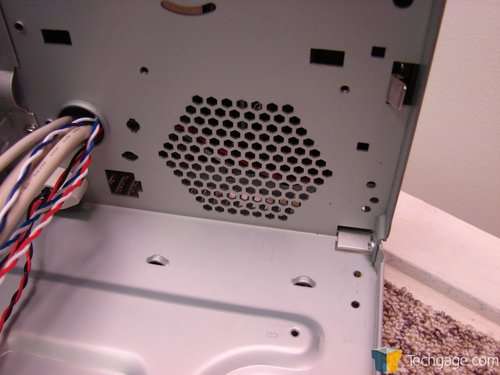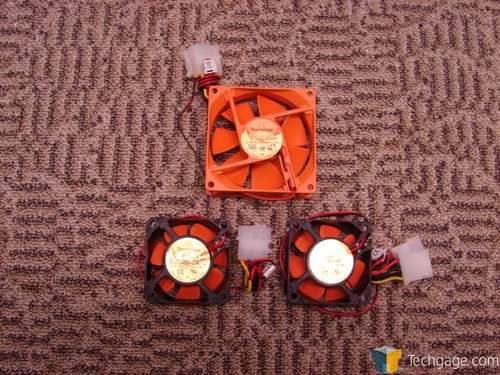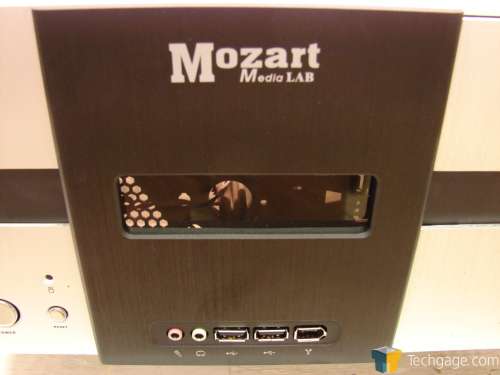- Qualcomm Launches Snapdragon 4 Gen 2 Mobile Platform
- AMD Launches Ryzen PRO 7000 Series Mobile & Desktop Platform
- Intel Launches Sleek Single-Slot Arc Pro A60 Workstation Graphics Card
- NVIDIA Announces Latest Ada Lovelace Additions: GeForce RTX 4060 Ti & RTX 4060
- Maxon Redshift With AMD Radeon GPU Rendering Support Now Available
Thermaltake Mozart VC4000 HTPC Case
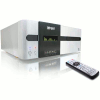
The “Mozart” name implies style and grace, and the Mozart home theater PC case certainly offers elegant styling. But is its beauty only skin deep? Here’s an in-depth look at this popular home theater PC case from Thermaltake.
Page 3 – Features Overview
Like most home theater PC cases, the Thermaltake Mozart attempts to achieve an appropriate balance of styling and performance, instead of focusing only on cooling performance. In reality, besides the front bezel styling, there’s little to separate the Thermaltake Mozart from the host of other HTPC cases that are available. Here’s a thorough look at the features and construction of the Mozart case.
The front of the Mozart case is constructed of aluminum, including the black-anodized center console which contains a window for an optional vacuum-fluorescent display (VFD). The black horizontal stripe is an inset panel of painted steel. The 5.25″ external bays are concealed by an aluminum door which is hinged at the bottom and held at the top by a pair of touch-release latches.
A black bezel piece is meant to be attached to the end of the DVD drive tray with a piece of double-sided foam tape, in order to allow the tray to extend while the front door is closed, while maintaining a consistent appearance when the tray is closed. To be honest, I’m not sold on this approach, since it’s based on little more than sticking things to other things. It just seems cheap to me.
Something else that struck me as “cheap”-feeling was the front door of the case. The bend radius of the door is larger than the radius of the curve on the top of the aluminum bezel piece, so the edge of the door sticks out by about 1/16 inch. The Mozart is by no means an expensive case, but a little attention to detail could have prevented this. In addition, the edges of the front panel aluminum pieces feel slightly rough to the touch. There’s virtually no fine finishing at all – the edges feel very ‘machined’.
While the front bezel of the Mozart case (including the drive bay covers) is made of aluminum, the rest of the case is made of 0.8mm thick SECC steel, like most other cases. The top panel has a silver sprayed finish, which is neither glossy nor perfectly smooth. Instead, it has a slight orange-peel texture. There are ventilation openings on the top of the case, one of which looks like it could accept a fan, but there are no mounting points for a fan. The bottom of the front bezel also contains ventilation holes which supply air to the front case fan.
The rear of the case holds little to get all that excited about. The Thermaltake Mozart is essentially a full-ATX case rotated 90 degrees, so it offers support for full-size ATX motherboards. With the exception of the two grilles for the rear-mounted case fans, and whatever ventilation your power supply provides, there are no other provisions for airflow on the rear of the case. The Mozart makes this up by adding the pair of openings on the top panel, which provide cold air intake for the CPU and video card.
Removing the cover of the Mozart case (which involves three thumb screws), we see that the motherboard tray is covered by two large bracing rails. One rail has a point where a duct to the CPU fan could be installed, though this is not included. The other rail incorporates an additional pair of 2.5″ hard drive mounting locations. Combined with the triple-space rack for 3.5″ drives mounted to the front of the case, this brings the total number of 3.5″ drive bays up to 5. The Mozart case also has a contact switch, for motherboards that support an alarm function if the case is open.
Let’s talk cooling. In a HTPC case, efficient and quiet airflow is the goal. Usually, this means using large, slow-spinning fans, though in a relatively low-profile HTPC case, this isn’t always easy. It’s not uncommon to see a pair of 80mm fans instead. In order to allow the two 80mm fans to operate as quietly as a larger fan, the two smaller fans must spin slower and move even less air.
The Thermaltake Mozart case features two 60mm rear case fans, which spin at 2500RPM according to the specifications. It’s possible to make these small fans run quietly, but they won’t move much air at all. The front case fan is an 80mm fan, but the grille in front of the front case fan is even smaller – about 70mm square. This will put a serious restriction on the airflow for this fan.
By this point, I’m not holding out too much hope for truly silent cooling, though I hope the case can manage a quiet noise level. All three case fans are made by Chinese manufacturer Hong Sheng.
Of course, as I mentioned before, the Mozart doesn’t include a VFD by standard. I’m not sure what they expect us to do about this, since Thermaltake doesn’t sell the Media Lab kit separately, which would include a VFD for the Mozart. Some light modding may be required to make your own two-line VFD fit this case.
However, if you order the case with the Media Lab option, the case includes a pre-installed VFD, saving you a lot of trouble if you want visual feedback from the front panel of your HTPC. It would be nice to have a VFD programmed to display the available disk space on the machine, since HTPCs often do DVR duty, and HD video can eat up a ton of hard drive space.
Now that we’ve looked at the features of the Mozart case (which are about pretty average as HTPC cases go), let’s look at the process of building a system in this case.
|
|
Support our efforts! With ad revenue at an all-time low for written websites, we're relying more than ever on reader support to help us continue putting so much effort into this type of content. You can support us by becoming a Patron, or by using our Amazon shopping affiliate links listed through our articles. Thanks for your support!




